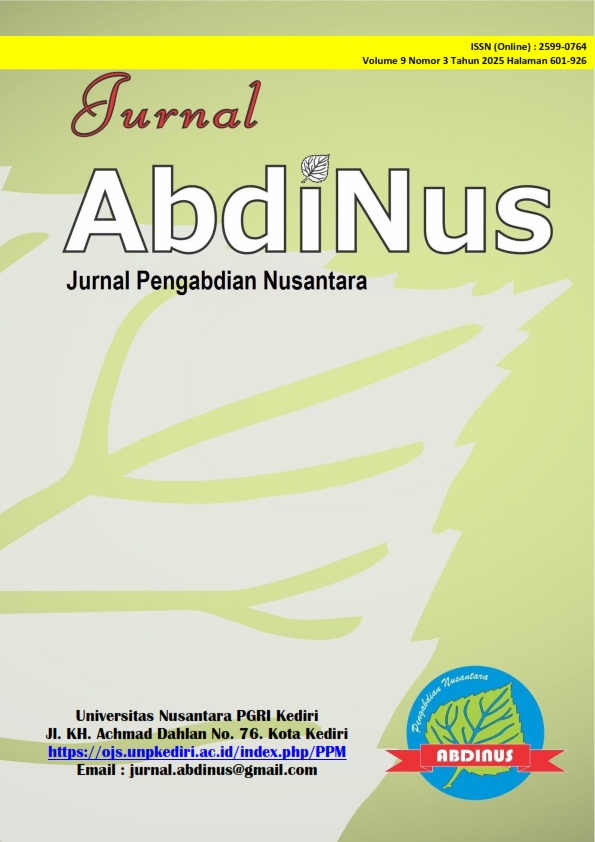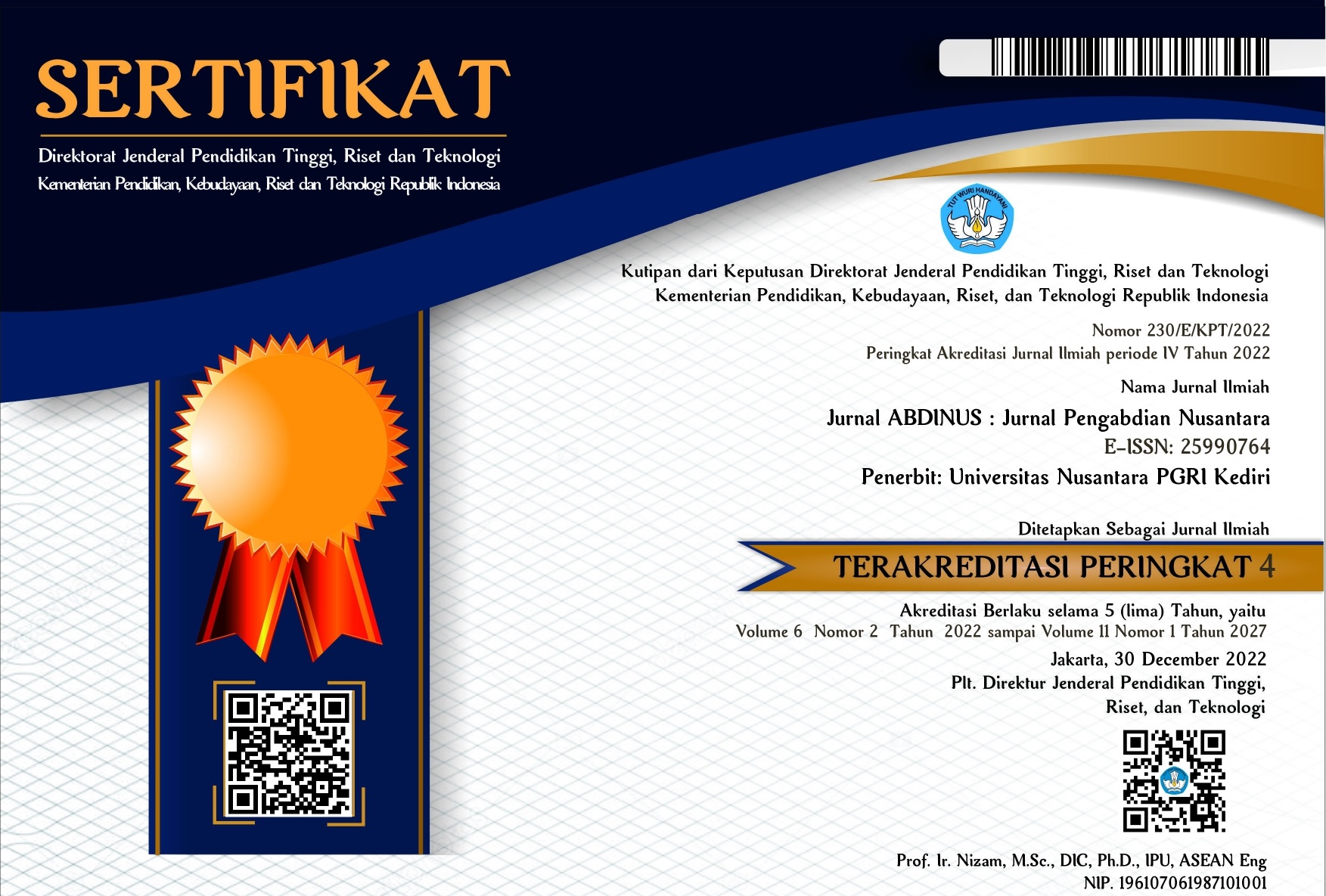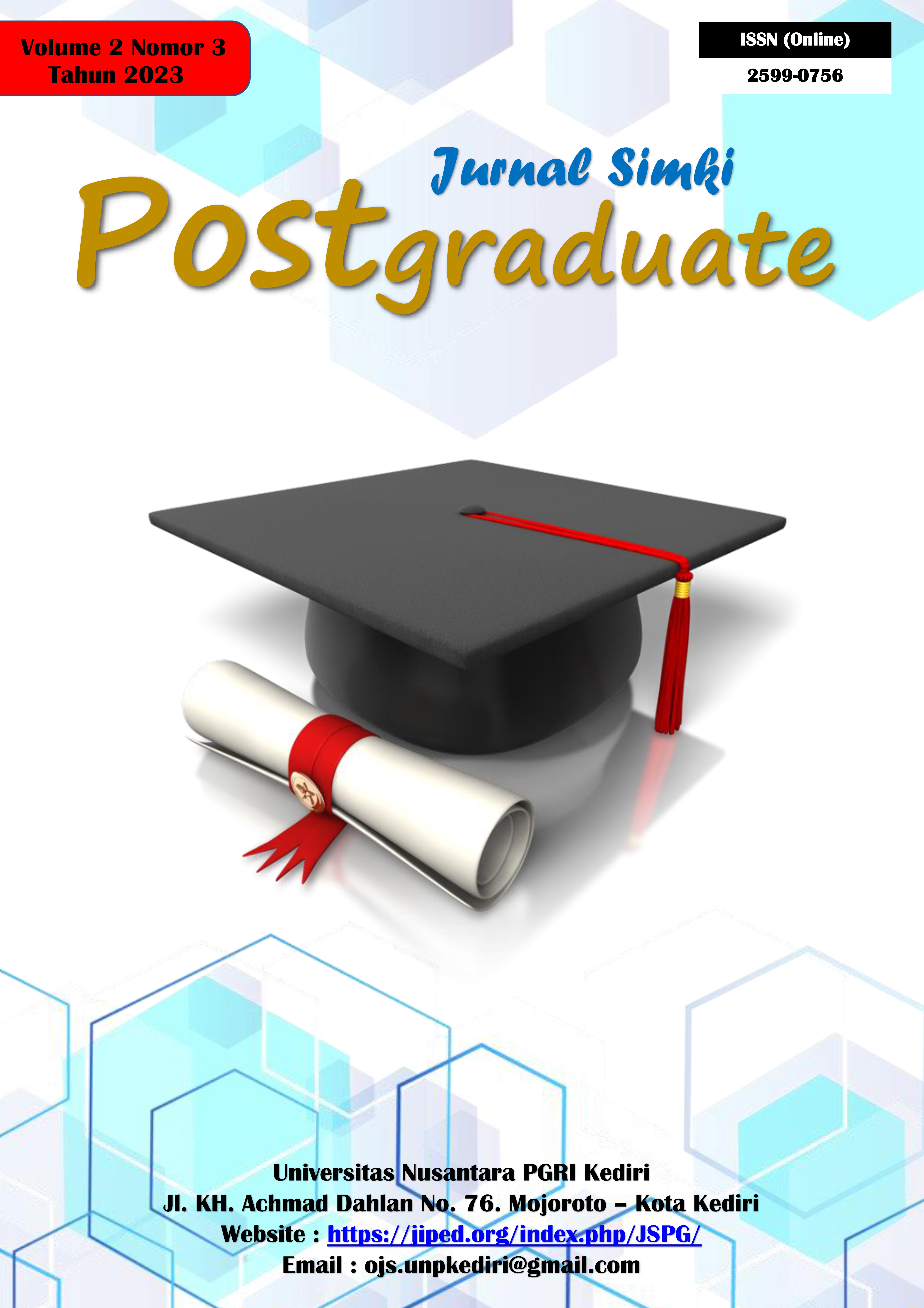Gambaran Durasi dan Jumlah Penggunaan Gawai terhadap Kesehatan Mata Tenaga Kependidikan dan Tenaga Pengajar di Surabaya Barat
DOI:
https://doi.org/10.29407/ja.v9i3.25896Keywords:
Multidevices, Screentime, Eye disordersAbstract
Advances in information and communication technology over the past 20 years have led to a major transformation in how humans interact with their surroundings. The average time individuals spend using the internet through digital devices has reached more than 6 hours per day, with much of this time spent on screen time. This program also aims to educate the academic community on how to increase understanding of the importance of eye examinations and general eye health care by conducting screenings and eye examinations for educators and educational staff to prevent and detect eye disorders early. The scope of participants includes educational staff and teaching staff in the West Surabaya area, and the activity was carried out at Ciputra University in May 2024. The implementation method began with a general examination, an eye examination using an Auto Refracto Keratometer (ARK) device, and a Snellen Chart, which was diagnosed directly by an Ophthalmologist. The results of the examination were processed using a quantitative descriptive test method in the form of data tabulation by comparing the number of devices used with the duration of use. The results of community service, participants who had the most eye disorders were multi-device users and for a duration of more than 2 hours, therefore it is necessary to carry out regular eye screening, and limit the number of digital devices used simultaneously, and implement prevention of eye damage.
Downloads
References
Agustin, D. (2018). Desain booth display ramah lingkungan untuk pemasaran produk olahan hasil tambak. Jurnal Envirotek, 10(1). https://doi.org/10.33005/envirotek.v10i1.1168
American Optometric Association. (2021). Computer Vision Syndrome. Retrieved from: https://www.aoa.org
Aryotejo, G., Hakim, M. M., Firmansah, F., & Safarizki, H. A. (2021). Pelatihan Efisiensi Sumber Daya Sistem Operasi Windows pada Masa Pandemi Covid 19. Jurnal ABDINUS : Jurnal Pengabdian Nusantara, 4(2), 238–246. https://doi.org/10.29407/ja.v4i2.14906
Datareportal. (2024). Digital 2024: Global Overview Report. Retrieved from https://datareportal.com
Enthoven, C. A., Tideman, J. W. L., Polling, J. R., Yang-Huang, J., Raat, H., & Klaver, C. C. W. (2020). The impact of computer use on myopia development in children: results from the Generation R Study. Acta Ophthalmologica, 98(3), 315–321. https://doi.org/10.1111/aos.14242
Ghebreyesus, Tedros A. (2019). World report on vision. World Health Organization, 214(14), 180–235.
Holden, B. A., et al. (2016). Global prevalence of myopia and high myopia and temporal trends from 2000 through 2050. Ophthalmology, 123(5), 1036–1042. https://doi.org/10.1016/j.ophtha.2016.01.006
Kementerian Kesehatan Republik Indonesia. (2023). Laporan kesehatan mata di Indonesia. Jakarta: Kemenkes RI.
Lin, J. B., Gerratt, B. W., Bassi, C. J., & Apte, R. S. (2021). Short-Wavelength Light-Blocking Eyeglasses Attenuate Symptoms of Eye Fatigue. Investigative Ophthalmology & Visual Science, 62(2), 18. https://doi.org/10.1167/iovs.62.2.18
Maino, D. M., Viola, P., Donati, D., et al. (2021). Blue light exposure and digital eye strain. International Journal of Environmental Research and Public Health, 18(5), 2361. https://doi.org/10.3390/ijerph18052361
Mark, G., Gudith, D., & Klocke, U. (2017). The cost of interrupted work: More speed and stress. Journal of Human-Computer Interaction, 23(1), 1–33. https://doi.org/10.1080/07370020701870905
Maulida, R., et al. (2022). Tingkat kesadaran masyarakat terhadap pentingnya pemeriksaan mata berkala. Jurnal Optometri Indonesia, 5(1), 67-79.
Moon, J. H., Lee, M. Y., & Moon, N. J. (2016). Association between video display terminal use and dry eye disease in school children. Journal of Pediatric Ophthalmology and Strabismus, 53(3), 148–153. https://doi.org/10.3928/01913913-20160229-02
Rosenfield, M. (2016). Computer vision syndrome: a review of ocular causes and potential treatments. Ophthalmic and Physiological Optics, 36(5), 502–515. https://doi.org/10.1111/opo.12313
Sheppard, A. L., & Wolffsohn, J. S. (2018). Digital eye strain: prevalence, measurement and amelioration. BMJ Open Ophthalmology, 3(1), e000146. https://doi.org/10.1136/bmjophth-2018-000146
Wicaksono, Vicky Dwi, and Putri Rachmadyanti. (2016). “Pembelajaran Blended Learning Melalui Google Classroom Di Sekolah Dasar.” Seminar Nasional Pendidikan PGSD UMS & HDPGSDI Wilayah Timur, 513–21. http://hdl.handle.net/11617/9144.
Wolska, A., Mędrzycka-Dąbrowska, W., & Rosińczuk, J. (2021). The impact of long-term screen exposure on the eye health of children and adolescents: A systematic review. International Journal of Environmental Research and Public Health, 18(21), 11406. https://doi.org/10.3390/ijerph182111406
Downloads
Published
Issue
Section
License
Copyright (c) 2025 Jurnal ABDINUS : Jurnal Pengabdian Nusantara

This work is licensed under a Creative Commons Attribution 4.0 International License.














